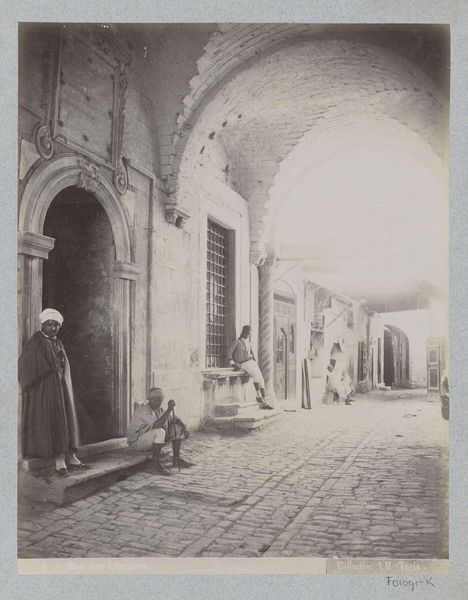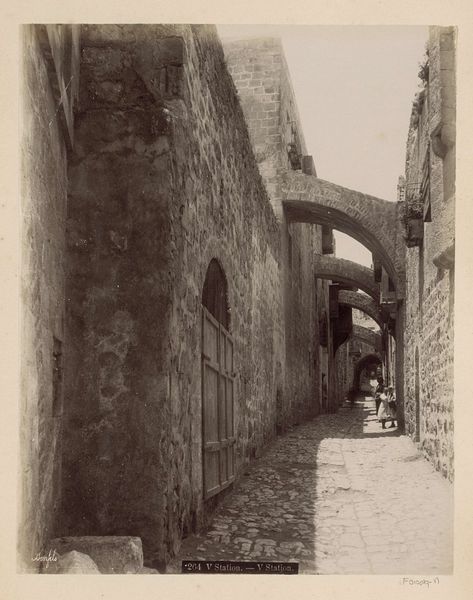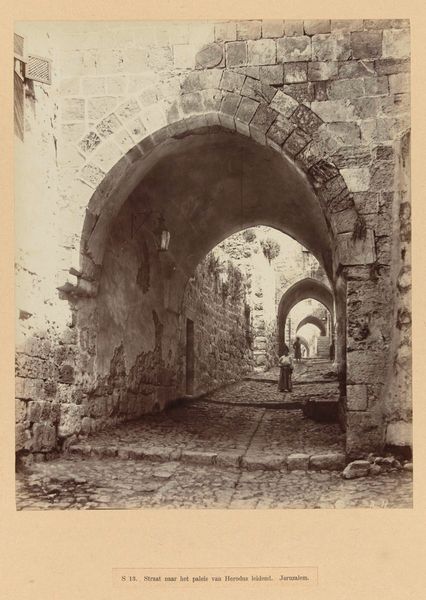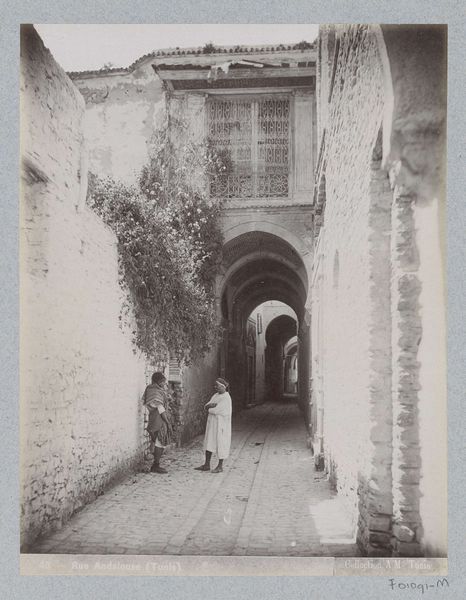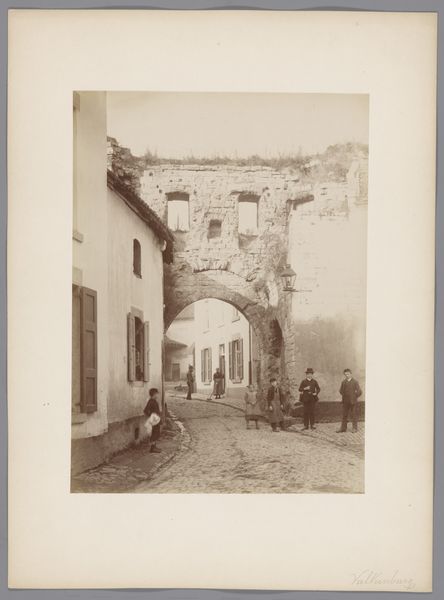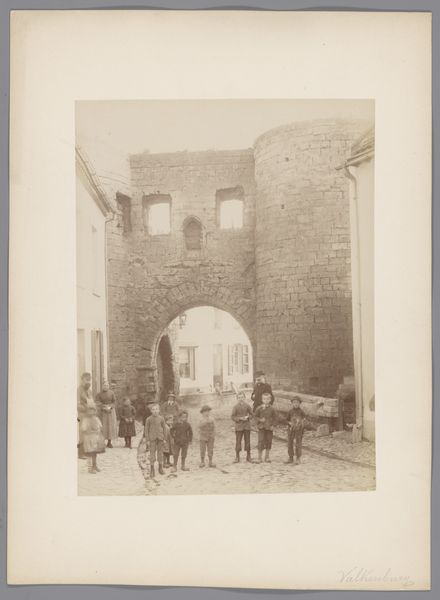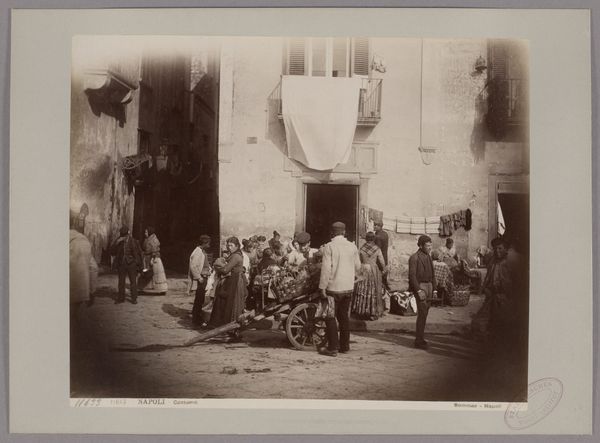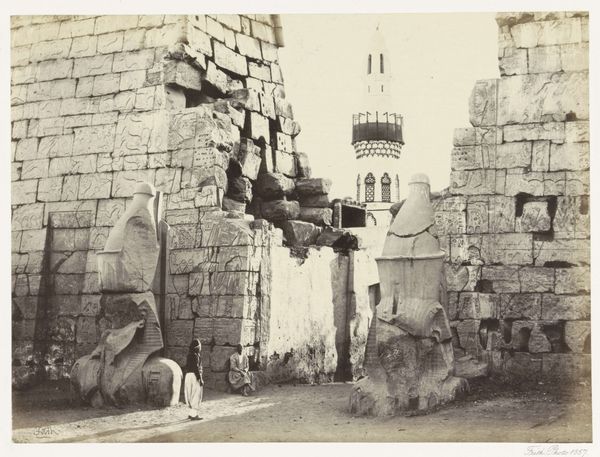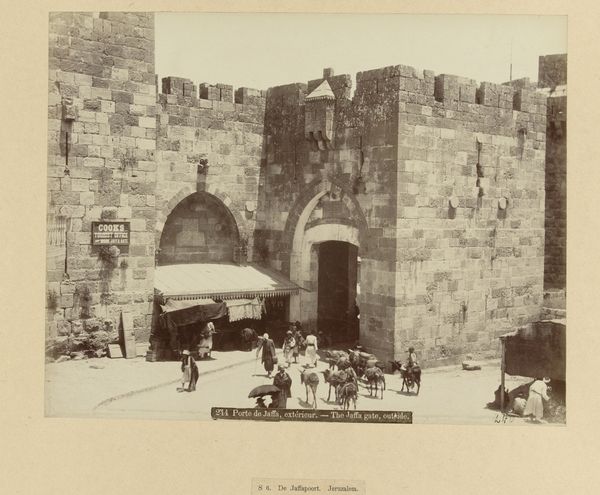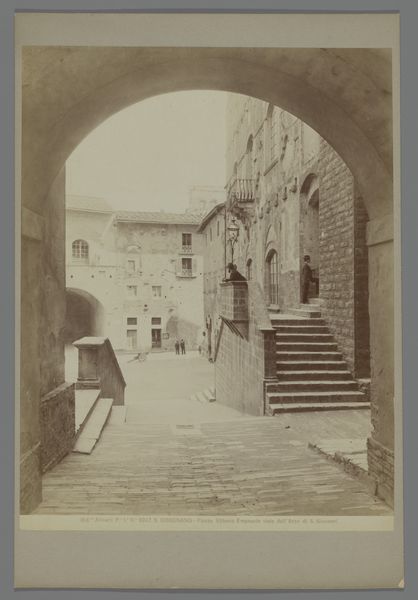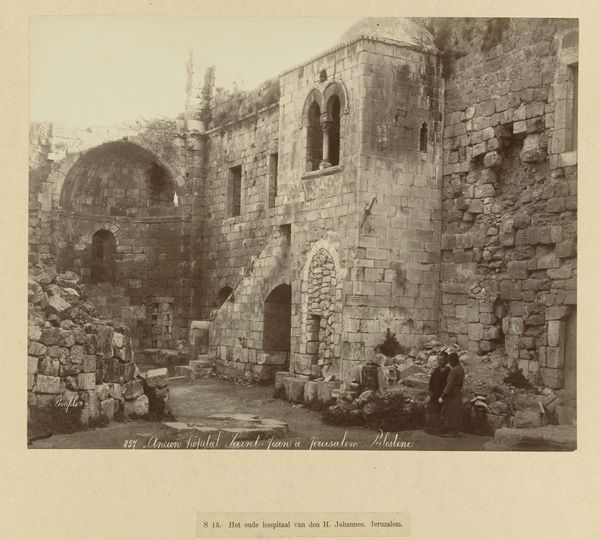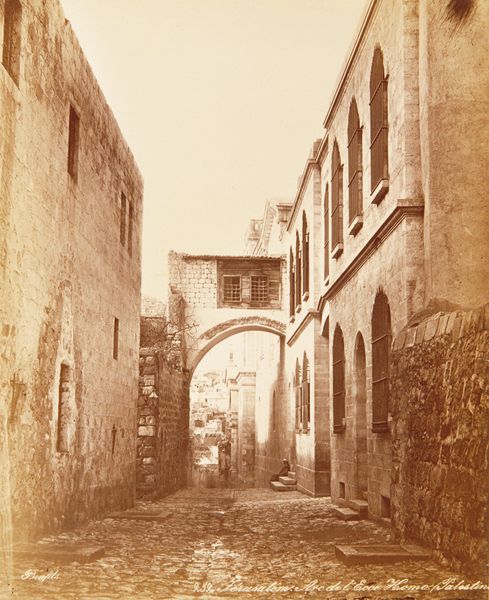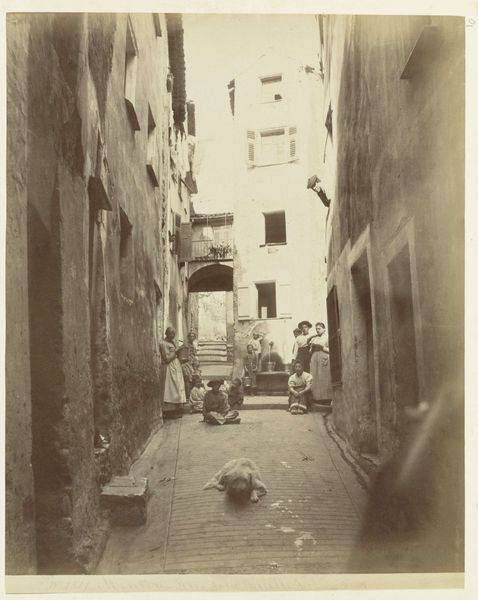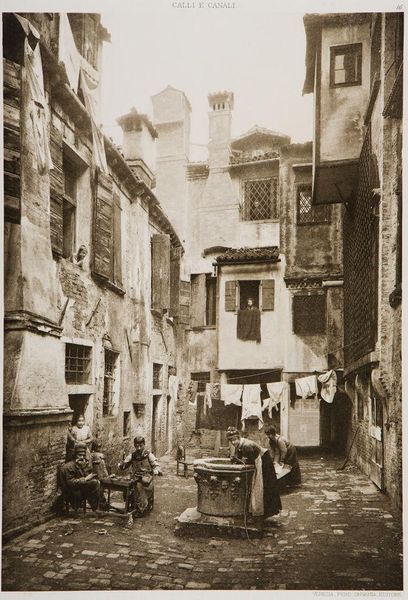
Mensen bij de opgang richting de Heilig Grafkerk in Jeruzalem c. 1867 - 1877
0:00
0:00
felixbonfils
Rijksmuseum
photography, albumen-print
#
landscape
#
street-photography
#
photography
#
historical photography
#
19th century
#
cityscape
#
islamic-art
#
albumen-print
Dimensions: height 271 mm, width 217 mm, height 558 mm, width 469 mm
Copyright: Rijks Museum: Open Domain
Curator: Looking at this photograph, I immediately feel transported. It’s grainy, sepia-toned – like peering into a collective memory. A bustling yet timeless street scene. Editor: Indeed! What we have here is an albumen print entitled "People at the entrance to the Church of the Holy Sepulchre in Jerusalem," attributed to F\u00e9lix Bonfils and believed to have been created sometime between 1867 and 1877. It's currently held in the Rijksmuseum collection. Bonfils, you know, operated a photography studio in Beirut and extensively documented the Middle East. Curator: A studio, huh? That explains the slightly staged feel – the arrangement of the figures on those ascending steps, leading towards that almost secretive arched entrance. I love the stark contrast between the sun-drenched stones and the shadows that cradle those huddled figures on the lower steps. It creates this compelling narrative of light and dark, of aspiration and stagnation. What’s striking is how he has created this tension, between, what feels like an exodus, to this sacred place. Editor: Exactly! This image encapsulates 19th-century orientalist photography, aimed at European audiences eager to glimpse faraway lands and peoples. The image plays into existing notions of what Jerusalem looked and felt like and also reinforces a Western perception of it at the time. These carefully arranged compositions often presented a romanticized – sometimes even fictionalized – view. Curator: And that romanticism, that almost painterly sensibility, seeps through despite the documentary nature of the medium. Look at the texture, how he captures every crevice in the stone walls. Editor: Think about who Bonfils was shooting for too. People often see historical images and think that the work accurately depicts the event that happened in reality but in fact it also constructs, to a degree, how history is later viewed by others. These photographs became popular souvenirs for tourists, a means of proving that one had actually been there or fulfilling fantasies of a spiritual pilgrimage. It allowed the West to literally and metaphorically “capture” the Orient. Curator: A clever visual metaphor, actually. It also says something about the power of representation and how photographs like this helped to create, solidify, and then distribute particular worldviews. Gazing at it now, one can only hope it inspires conversations about context, intention, and how we see the past. Editor: Precisely. I'm left pondering the weight of history contained within this simple photograph—it's a ghost of the world we thought we knew.
Comments
No comments
Be the first to comment and join the conversation on the ultimate creative platform.
